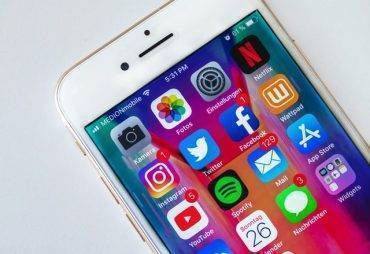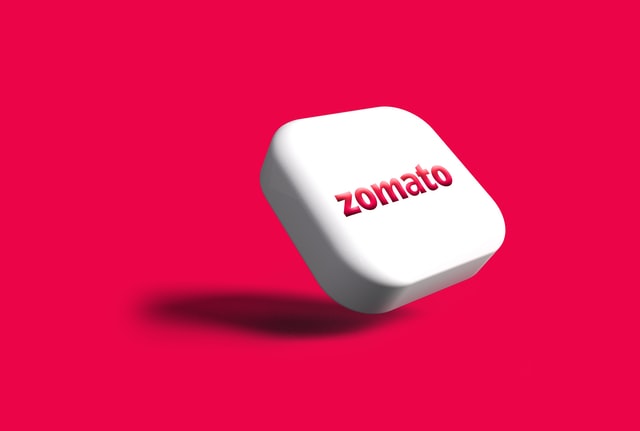Before divulging into MakeMyTrip’s digital marketing strategy, let’s take a look at what MakeMyTrip does.
About MakeMyTrip
MakeMyTrip(MMT) is an online travel company that was established in 2000 by Mr Deep Kalra and his team. It is headquartered in Gurugram, Haryana and earned revenue of Rs. 141.7 million dollars in the quarter that ended in June 2019.
MMT provides online travel services that include flight tickets, domestic and international holiday packages, hotel reservations, and rail and bus tickets. Recently, they have opened a new service where users can rent villas and apartments.
With 50 million+ downloads on the Android PlayStore and an average rating of 4.4 out of 5 stars, the service is widely used as an application. But their website is also easy to navigate and contains all the relevant features that a user would require in the travel niche.
Competitors of MakeMyTrip
MakeMyTrip’s main competitor is Yatra.com (National/Local Competition) and Booking.com (International Competition). These two are main competitors because other well-known names in the travel industry like Trivago. in and Airbnb only provide accommodation services. On the other hand, MMT, Yatra, and Booking.com not only offer accommodation services but also transport, trip-planning, VISA clearing, etc.
Though MMT’s business pages possess a fairly good number of followers on Instagram and Facebook, the engagement rate is low.
An insightful consumer survey has revealed that though MMT has several discount schemes and daily coupons, but doesn’t have group discounts and offers. The MMT’s marketing campaign aims at introducing such schemes to spark desire and ultimately action among the audience. The consumer survey has identified many pain points.

The Campaign
The basic idea behind launching this campaign is to target all those half-made and never-successful plans that college students and working freshers make.
The campaign focuses on giving group offers that even the introverts of the group can’t refuse. Though MMT already offers a lot of daily coupons, the communication is very family-oriented. This campaign makes it more dynamic and youthful.
Setting up VR Booths where three people can enter at once and experience a “friend-cation” is the focus of the digital marketing campaign. The “friend-cation” has to be at one of the 5 spots that a college student chooses to travel to Goa, Thailand, Manali, Rishikesh, and Leh. The student will experience the sonic range, temperatures, and other activities virtually. After this, he/she will exit the booth from a walkway tunnel from the other side. This site is divided into 5 sections catering to the 5 destinations.
They can take pictures, make boomerangs or create videos within the tunnel. They can post them up with a cool hashtag for a feature on their page. This helps MakeMyTrip to deviate from business trips or family vacations and add a trendy “friend-cation” in their communication.
Target Audience and Buyer Persona
This project focuses on acute market segmentation. The TG is a specific age group. To collect insights and find pain points, a consumer survey was circulated. It was sent to young adults, college students, and every one of the 18-24 age brackets. The buyer persona was determined after receiving 65 responses.
The primary and secondary buyer personas were determined by contacting college students, festival enthusiasts, young adults, freshers, interns, and employees between the age group of 18-24.
Gender is the different point in the two personas. The students have accepted MMT’s marketing strategy because this campaign is going live in India’s college fests. Unfortunately, the females here are considered a secondary audience. They have permission issues and a lot of other personal factors to consider before planning a trip with friends and colleagues. This creates a hindrance to direct sales. Males don’t have such factors to consider so it becomes easier to sell the idea.
Make My Trip Digital Marketing Strategy
- SEO
The online activities of MMT are to boost digital marketing strategy. It complements the offline campaign they use all the content collected to create some noise among the younger generation online.
The SEO strategy that the students have used mainly focuses on targeting keywords extensively. It helps them to penetrate almost every niche that a youngster searches on Google.
For instance, 85 keywords are available in the presentation. They have been broken into generic, competitive, and branded keywords.
The meta-tags will have a quirky tone which will finally take them to the landing page showcasing what their ‘friend-cation’ could look like if they choose to Make My Trip.
They will also set up their Facebook, Instagram, and Twitter communication along with search engine activities. It will be done through organic posts that follow recent trends and communicate in the language of the younger generation. Their main focus will be Facebook and Instagram since their target audience mostly uses these two.

- Email Marketing
Students have undertaken the email marketing strategy. They send reminded emails with catchy subject lines and descriptions. Some emails will have a link to a landing page, some to blogs, and the rest to video montages that are made of the offline activity done at different college fests.
- Endorsers
MMT signed up the most energetic duo, Alia Bhatt and Ranveer Singh, in February 2016. They filmed several humorous and witty TVCs to connect with both young and old audiences. This is the reason students don’t change their endorsers of the brand and planned to make a series of video ads that coincide with their campaign. They will promote it on YouTube, Facebook, and IGTV.
The ads will be in a ‘to be continued’ format where Alia and Ranveer will narrate the stories of MMT to their grandchildren and show flashback memories. These stories will show the 5 destinations targeted by the st6udents. For instance, how Alia and Ranveer met in Manali and fell in love, Ranveer’s bachelor trip to Leh, Alia’s ‘girls trip’ to Thailand, etc.
- SEM
In addition to Google display and banner ads which will lead to the landing page after receiving a click, the students have used keywords like “I need a break”, and ” What to do when I’m bored”. These are really innovative keywords. So when the TG searches these keywords on Google, the MMT Land Meta tags and display ads appear.
The content creators that they have planned to rope in include BuzzFeed, Filter Copy, Mad Over Marketing, Social Samosa, JordIndian, ScoopWhoop, etc. These are popular among the target audience and will create blogs, memes, quizzes, video content, and native communication circling around the MMT Land campaign to create buzz and spread awareness in order to to create ultimate action.
- Innovative Campaign
Along with the main campaign, there was an innovative campaign. Since the main campaign focuses on tier 1 and tier 2 colleges’ events and fests, in the innovative campaign all tier 3 colleges and schools are targeted.
In an innovative campaign, a school bus is totally revamped according to the MMT theme. After a day filled with engaging activities and prizes, MMT will ask all the students to write down their dream destinations. Also, they will be asked to name one activity that they always wanted to do there, for instance, deep-sea diving in Andamans or bungee jumping in Rishikesh.
After collecting all the wishes, MMT will announce 5 lucky winners and will help them to fulfil their wishes.
Conclusion
MMT is a renowned travel company in India. It can grow tremendously if it follows the right digital marketing practices and use of resources. The digital marketing campaign was created to reveal a new facet of the brand.





